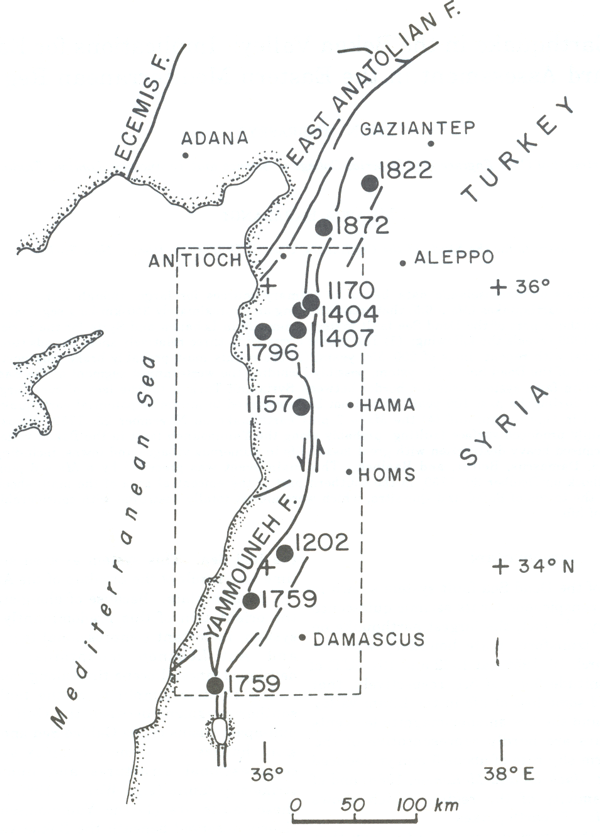Home |
Publications
Ambraseys, N. N., and Barazangi, M.
The 1759 earthquake in the Bekaa valley: Implications for earthquake hazard
assessment in the eastern Mediterranean region
Journal of Geophysical Research, 94 (B4), 4007-4013, 1989.
Abstract
Analysis of macroseismic data based on primary
sources for large, though infrequent, historical earthquakes (Ms > 6.5) that
occurred along an approximately 350-km-long segment of the northern part of the
Dead Sea fault system primarily in Lebanon and Syria for the period 1100-1988
reveals the following: (1) Ten events occurred in three relatively short periods
(tens of years) with repeat times of 200-350 years; (2) the events most probably
broke this north segment of the Dead Sea fault system, possibly including the
westernmost segment of the East Anatolian fault system near the border between
Syria and Turkey; (3) the lack of such large events during the past 100 years
should not be interpreted to minimize potential earthquake hazard in this region;
and (4) the Ms ~ 7 plus earthquake on November 25, 1759, almost certainly produced
surface faulting probably along the Yammouneh fault in the Bekaa valley and caused
heavy destruction with great loss of life in numerous villages and towns, including
Safad, Damascus, Beirut, and Baalbek. This main event was preceded by a Ms ~ 6
plus foreshock on October 30, 1759, in the southern part of the epicentral area
of the main shock near the towns of Safad and Qunaitra, which were almost totally
destroyed with considerable loss of life.
Copyright Statement
An edited version of this paper was published
by AGU. Copyright 1989 American Geophysical Union.
Link to JGR
Key Figures and Captions
Figure 1a. Location map of study area (inset) showing distribution
of large historical earthquakes under investigation.

Home
| Publications

